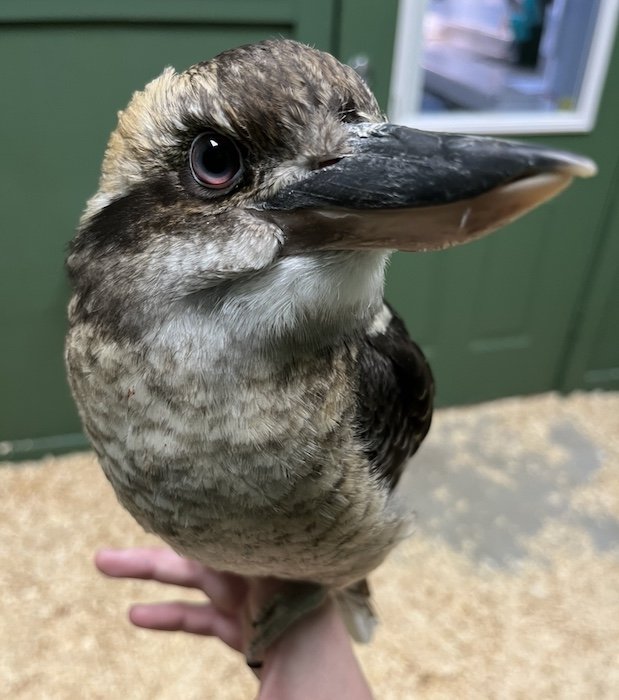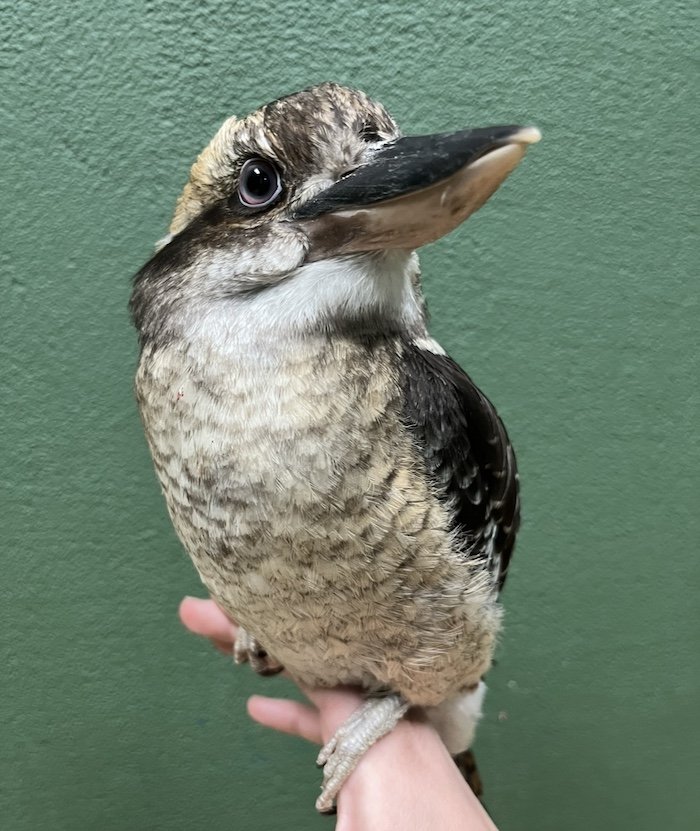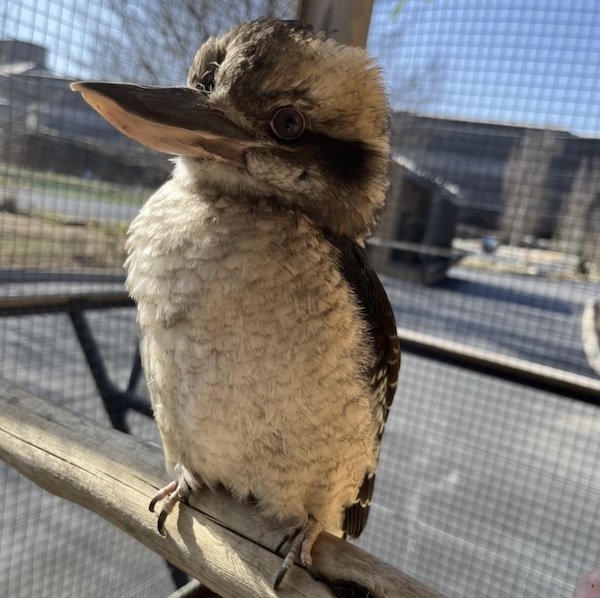Laughing Kookaburra
If you ever visit the island continent of Australia, you may be startled to hear sudden maniacal laughter coming from the trees.
You may also recognize the sound from movies, as it is one of the most common noises used in films to represent jungle life. But this distinctive sound doesn’t come from a jungle animal at all—this raucous “laughter” comes from none other than the laughing kookaburra!
Named for their unique calls, laughing kookaburras are the largest of the ~120 species in the kingfisher created kind. Females are larger than males, but males have more blue feathering than females. You can identify kingfishers by their large heads with long, strong, dagger-like beaks. They are often quite colorful and can be found in almost every habitat and continent except Antarctica.
How many pairs of the kingfisher kind were on the ark?
God created the kingfisher kind 6,000 years ago on day five of creation week, along with every other winged bird according to its kind (Genesis 1:20–23). The kingfisher kind would have also been saved from the flood on Noah’s ark (Genesis 6:19–20). But how many pairs of the kingfisher kind were on the ark? Hint: it wasn’t just one! While God brought Noah many animal kinds in single pairs, Genesis 7:3 says that there were actually seven pairs of clean animal and bird kinds on the ark. That means all ~120 of the kingfisher species today (including the laughing kookaburra) are descendants of 14 birds on the ark!
Laughing kookaburras are native to dry forests and wetlands of eastern Australia. They’re also found in farmlands, suburbs, and urban areas because they’re comfortable around people. These birds live in small family groups called “riots” made up of a mated pair and their most recent offspring. Chicks are hatched in nest cavities carved into trees or termite mounds and usually live with their parents for four or five years before finding their own mates.
While they would have eaten plants before Adam and Eve’s sin cursed the world (Genesis 3), kookaburras today are fierce hunters. They’re not picky about their prey—anything they can swallow is fair game. They have excellent color vision and can see really far away. They will patiently wait in trees or other perches for prey to approach before pouncing. Next, they’ll drop their prey from great heights or slam their prey into the ground or hard objects. Extra strong neck muscles aid them in bashing their prey. Venomous snakes don’t scare them—these birds consider them a tasty treat! In fact, they’ve been introduced to Western Australia, Tasmania, New Zealand, and other surrounding islands to help reduce pests because of their reputation for killing deadly snakes.
Laughing kookaburras are most well-known for their cackling calls.
But of course, the laughing kookaburras are most well-known for their cackling calls. These unique noises come from their syrinxes (voice boxes in birds), which have two sources of vibrations. That means they can make two noise frequencies at the same time with multiple harmonics. This iconic call is a learned behavior used to mark territory (usually at dawn and dusk), attract mates, establish hierarchy, or reinforce family bonds. Fathers will sing portions of their songs for chicks to mimic. Singing lessons take about two weeks before chicks can begin joining in full chorus songs. Neighboring groups will beautifully synchronize their choruses without any overlaps. In addition to singing, these birds also take part in stunning territorial aerial displays, including trapeze and circular flights.
The Ararat Ridge Zoo is home to a laughing kookaburra named Silas. He was named after the biblical Silas, who was Paul’s companion during much of his missionary journey. The name was chosen in reference to Paul and Silas singing hymns to God in prison (Acts 16:25). During your visit, you can see Silas in his aviary located along Monument Walk in front of the Ark Encounter structure. You may even get to hear his distinctive kookaburra laughter!
- © 2024 Answers in Genesis
- Privacy Policy
- Contact
- About





